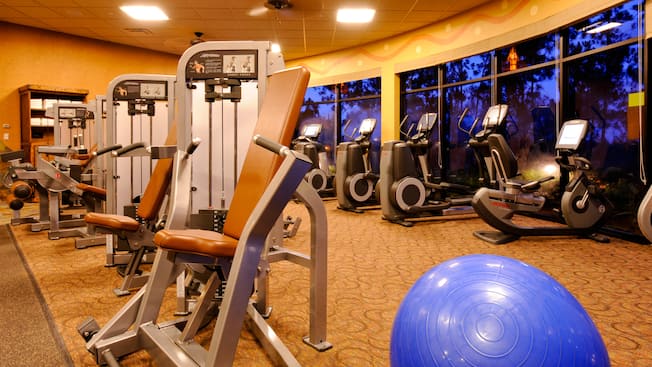
Studies show that students respond better to nature lessons. Various factors may influence the outcome of nature lessons in the classroom. The setting, teacher training, as well as redirects, may all have an impact on the outcome of nature lessons in the classroom. Here are some reasons nature lessons can be beneficial to students. These factors and many more are covered in this article. We hope it is helpful. Continue reading to find out more about nature lessons for students. These lessons can be very beneficial for students, and you'll be amazed!
Following a lesson in Nature, students engage in classroom discussions more effectively.
Studies have shown that students engage in classrooms more effectively after learning lessons that involve exposure to nature. These advantages were found consistent across a range engagement measures including students' ratings on teachers' lessons. Research also revealed that environmental exposure can have immediate effects on attention and stress, and even increase motivation. Teachers may be reluctant to teach nature lessons because they worry that students will not be as active in learning.
The researchers matched the subjects of the two lessons so that the differences were statistically significant. The nature lesson had an advantage over its counterpart in classroom in 22 of 48 pair comparisons. The number of redirects dropped by half. This allowed teachers to work for longer periods of time without interruptions, which increased their efficiency. Comparisons were made on the basis of teacher characteristics, subject matter and week of semester.

Enjoy the novelty of the setting
It is well-documented that nature lessons can have a positive effect on students' learning. The effectiveness of incorporating nature lessons into the curriculum has been well documented. Classroom engagement is much higher after a lesson in nature than after an indoor one. This effect was demonstrated in teacher ratings and third-party counts of redirects. A composite independent index using photos also showed the effect. Although this effect was not evident in student ratings, it was consistent across teachers and the final five weeks.
These nature lessons have many benefits beyond their educational value. The classroom-based lesson won out in the randomized controlled trials. Only one student was not better. Observations lasted 20 minutes. The study matched paired lessons in nature and classroom according to teacher and student. Randomized controlled trials took place at different times of day, week and semester.
Redirects can have a significant impact
Kuo Browning, Penner (2018) studied the impact of redirects on student engagement during outdoor lessons to compare the effectiveness and efficacy of nature lessons and classroom lessons. Students were more engaged in the outdoor lesson than before, and the number was cut by half. This suggests that outdoor lessons are a good way to help students focus. Also, nature lessons may have cognitive benefits.
Although these effects are not significant, they are still important. Overall, the effect of redirects on classroom engagement is a strong signal that nature lessons are effective. Both students and teachers rated the experience positively. However, their ratings after the lesson were significantly higher. Although student ratings were not significant, teacher ratings showed significant differences between the two conditions, even after accounting for redirects. Despite the slight differences between these two groups, the results from this study indicate the positive effect of nature lessons.

Teacher training has an impact
Recent research examined the effects of teacher training in nature lessons. They found that the more teachers were exposed to nature, the more the students improved in these subjects. The advantage was found across 10 topics, five weeks of school year, two teachers and two student groups. Nature lessons-trained teachers are twice as likely that they can make a difference to students' lives.
The study also explored the effects nature lessons had on classroom engagement. The participants were randomly assigned into one of two types school: classrooms that included or did not include nature lessons. The school was an environmental magnet school that served students who were disadvantaged and low-income. Eighty percent eligible students received a reduced-price or free lunch. The study also included students with a history of social, economic, or educational disadvantage. Before students could enroll, parents were informed and provided written consent.
FAQ
What is the most essential item for survival?
Food is essential for survival. You also need shelter from the elements, which are not as essential as food. If you don’t eat you won’t live very long.
What is your best survival tool in the event you lose everything?
The compass tells us which way north is. It also shows us the distance we have traveled since our origin point. The compass may not always help you find your way if you're travelling to a mountainous area. However, if you're in a flat area, the compass should be able to show you the way.
If you don’t have a map or compass, an object like a stone or tree could be used as a reference. Although you would still need to locate a landmark to guide yourself, at least you would know where north is.
Why are knot-tying skills very important for survival?
People all over the globe use knots to attach items like ropes, fishing lines and ladders. You can also use them to tie bags closed, secure objects to trees and create shelters. It is a vital skill that can save lives if you have to tie yourself to a tree rope or string or use them as a shelter.
What is the difference between a folding knife and a fixed-blade knife?
Folding knives are compactly designed to fit into a pocket or backpack. The blade folds away when not in use.
Fixed-blade knives have a fixed blade that can be used for normal tasks. They usually have longer blades than folding knives.
Fixed-blade knives are more durable but less portable.
How to Navigate with or Without a Compass
Although it doesn't give you a map of where you are heading, a compass can help you navigate back home if your bearings have been lost.
There are three methods you can use to navigate.
-
By landmarks
-
Magnetic North (using a compasse)
-
By stars
You recognize landmarks when you see them. They are trees, buildings or rivers. They are useful as they can be used to show you where you are.
Magnetic North simply indicates the direction in which Earth's magnetic field points. If you look up at a skyline, you will notice that the sun seems to be moving across it. However, the earth's magnetic field actually causes the sun to move around the earth. Even though it seems like the sun is moving across a skyline, it actually moves around horizons. At noon, the sun is directly overhead. At midnight, you will see the sun directly below. Because the earth's magnet field is constantly changing, the exact position of the magnetic North Pole changes every day. This could mean you can be off-course by quite a bit in one day.
Another method of navigation is to use stars. Stars appear as if they rise and fall over the horizon. These are points in space you can use to find your exact location relative to other locations.
What is the most important thing to do in a survival scenario?
When faced with emergency situations, the first thing to do is assess the situation. It is essential to understand what is going on around you, where you are, and how you got there.
It is also important to understand what you can expect from the environment. For example, if you're in the middle of nowhere, you may not be able to use any form of communication.
You don't need to know everything if you don’t have any knowledge.
If you are in immediate danger, it's best to try and get help immediately. You might be able to wait until you are safe to collect information and find out the facts.
What are the basics of survival camping?
Prepare yourself for all eventualities when you travel on an adventure. You have to learn how to survive in extreme conditions.
You need to be prepared for every type of weather. If you don't take these precautions, you might end up dying.
Statistics
- The Dyrt PRO gives 40% campground discounts across the country (thedyrt.com)
- Not only does it kill up to 99.9% of all waterborne bacteria and parasites, but it will filter up to 1,000 liters of water without the use of chemicals. (hiconsumption.com)
- Without one, your head and neck can radiate up to 40 percent of your body heat. (dec.ny.gov)
- The downside to this type of shelter is that it does not generally offer 360 degrees of protection and unless you are diligent in your build or have some kind of tarp or trash bags, it will likely not be very resistant to water. (hiconsumption.com)
External Links
How To
How to find edible plants and animals during emergencies
Edible plants and animals are very important food sources during emergency situations. You should have them in your survival kit, as they can provide nutrition and energy that you do not have access to. You can use them to make cosmetics, medicines, and other items.
You should know where these plants grow and what kind of conditions they like, such as soil type, climate, and weather. This will enable you to quickly identify them. Unfortunately, you won't be able to know all the details of every animal and plant species. Fortunately, some general rules apply to most plants and animals.
If you see a plant, animal, or other living thing near water, it is likely that it prefers moist soil. Shiny leaves indicate that the plant was recently watered. If you see ants around a plant, you can assume that the plant provides nectar for pollinators. These simple observations will save you time and help you find useful animals and plants during an emergency.
To learn more about edible plant and animal species, you can consult books written by botany or zoology specialists. You can also find documentaries on rural life and talk to those who live there. The steps below will help you learn about animals, plants, and other topics.
-
Look out for animals or plants that live near water.
-
Pay attention to the growth habits of animals and plants.
-
Learn about the natural habitats of plants and animals. For example, you can look for places with a particular soil type, climate, or vegetation.
-
Identify the parts that plants and animals can be eaten.
-
Learn how to cook animals and plants.
-
Try to eat wild animals and plants so you are familiar with their taste.
-
Always be cautious when collecting wild plants or animals. Pick only endangered species.
-
All wild animals and plants should be properly stored. They must be kept out of direct sunlight.
-
After handling wild animals and plants, always wash your hands.
-
Before you eat fruits and vegetables, wash them.
-
Don't consume raw meat or fish unless you're certain that it's safe.